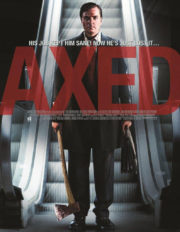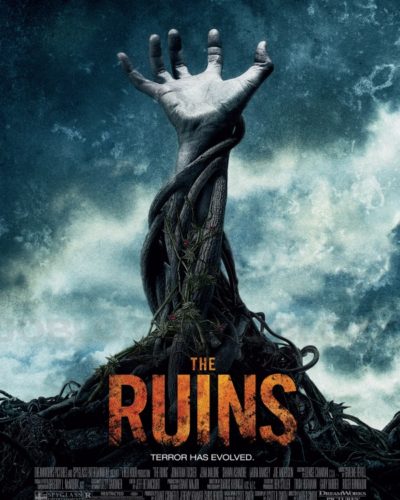A Scorching Descent into Desolation: “Hell” (2011)
“Blinded by the light, we walk without destination.” These haunting words encapsulate the bleached-out nightmare that is ‘Hell,’ a 2011 horror film directed by Tim Fehlbaum. Upon its release, it presented an apocalyptic vision not commonly seen in the horror landscape. ‘Hell’—German for ‘bright’—is a title that plays a cruel irony, offering a brief spoiler-free synopsis where the sun has scorched the Earth, and the remnants of humanity cling to survival under its brutal glare. It is a world where the harsh light hides darker impulses, and our protagonists must navigate through the literal and metaphorical brightness of a desolate world.
Scorched Shadows: Crafting a Sun-Baked Horror
‘Hell’ creates its unique atmosphere through a relentless, oppressive brightness. Unlike the typical horror film that cloaks its terror in shadows, ‘Hell’ presents a world where the sun is the enemy, and safety is found in the dark. The tone couples the natural fear of a dying world with the palpable dread of what humanity becomes when faced with extinction. Fehlbaum masterfully employs a minimalist approach, allowing the bleak environment to permeate every scene, making viewers squint as if facing the heat themselves. This is a story of survival where terror comes not just from the threat of other survivors but from the very world they inhabit.
Through a Lens, Bleakly: The Unyielding Gaze of ‘Hell’
The cinematography of ‘Hell’ is as stark as its landscape. The lighting and color palette consist of washed-out hues and over-exposed whites that imprint the film’s aesthetic firmly in viewers’ minds. Camera angles often evoke a sense of vulnerability, catching characters in moments of despair or panic while emphasizing their isolation amidst vast, barren vistas. Special effects are minimal yet impactful, reinforcing the notion that in this world, the greatest threat is the environment itself. The visual techniques underscore the horror without recourse to elaborate tricks, grounding the terror in a world that is all too plausible.
Sound is used sparingly, yet effectively, throughout ‘Hell.’ The soundtrack, consisting of ambient and industrial tones, complements the desolation. Indeed, the most harrowing moments are often punctuated by silence or the natural sounds of this ruined Earth, making the sudden revs of a car engine or the crackle of a fire startling intrusions in the eerie quietude.
Desperate Acts: The Human Heart in Conflict with Itself
The performances in ‘Hell’ are all about subtlety and restraint. As resources dwindle and trust becomes a valuable commodity, the actors convey much through layered glances and terse dialogue. The characters, while not deeply complex, are believable in their desperation, and their reactions to terror feel authentic. However, the film could have benefited from more backstory or development to fully realize its human element. Even in a world stripped down to its very essence, knowing who we’re rooting for – and against – contributes significantly to the stakes at hand.
Horror in ‘Hell’ is almost elemental – it is about the basest form of human fear, survival. It eschews supernatural elements and grotesque monsters in favor of psychological intensity and the threat of other humans driven to their worst by need. The film offers scares that are more about dread and less about gore or sudden jolts, emphasizing the pervasive anxiety of an unlivable world.
‘Hell’ also comments subtly on climate change, underscoring the very real horror of what could be. However, these themes don’t muddle the primary focus on survival. This thematic undercurrent adds a layer of provocative thought to the already unsettling situation but might leave some viewers yearning for a deeper exploration.
Surviving the Light: A Final Verdict on ‘Hell’
When it comes to effectiveness, ‘Hell’ is a horror movie that lingers in the mind more for its setting and mood than for outright frights. It’s thought-provoking and innovatively presents its horrors in broad daylight, a refreshing twist. However, it may not satisfy those seeking conventional scares or a more traditional narrative structure.
The film will appeal mostly to horror enthusiasts appreciative of a slower burn and psychological tension. Its unique aesthetics may also intrigue viewers fascinated by post-apocalyptic scenarios. ‘Hell’ stands in contrast to contemporaries like ‘The Road,’ favoring a subtler horror compared to the latter’s stark, grim portrayal of the post-apocalyptic genre.
In conclusion, ‘Hell’ is an atmospheric, visually striking horror film that succeeds in creating a unique and harrowing world. While it may have some flaws in character development and pacing, its strengths lie in its bold visual choices and its ability to unsettle through environmental dread. Movie-goers seeking a reflective, sun-scorched terror will find this movie a worthwhile watch, but those with a penchant for the visceral may need to look elsewhere. Consider this a cautious recommendation depending on where you fall on the horror spectrum and be warned of its intense, albeit not graphic, themes of human survival at its most desperate.




